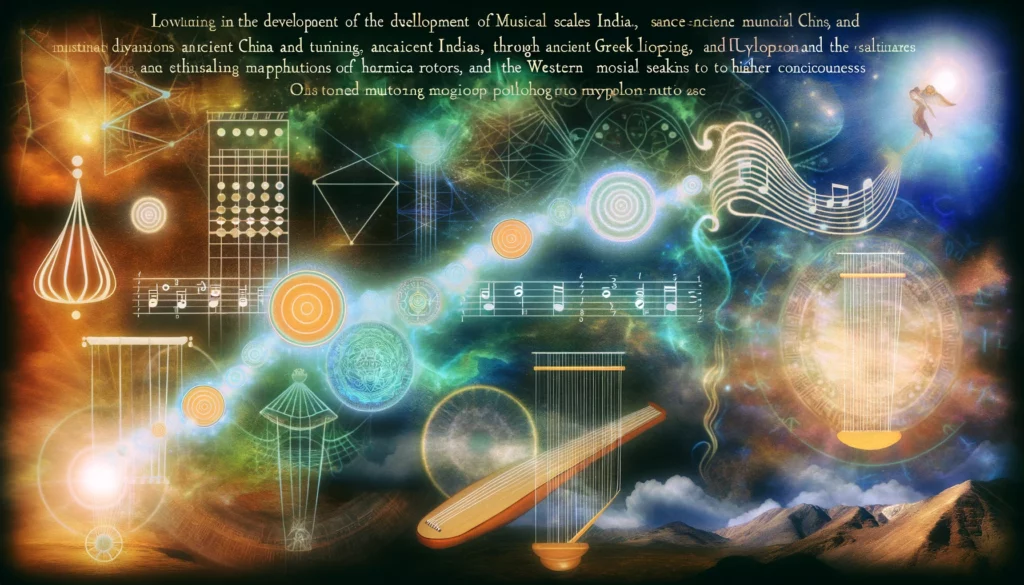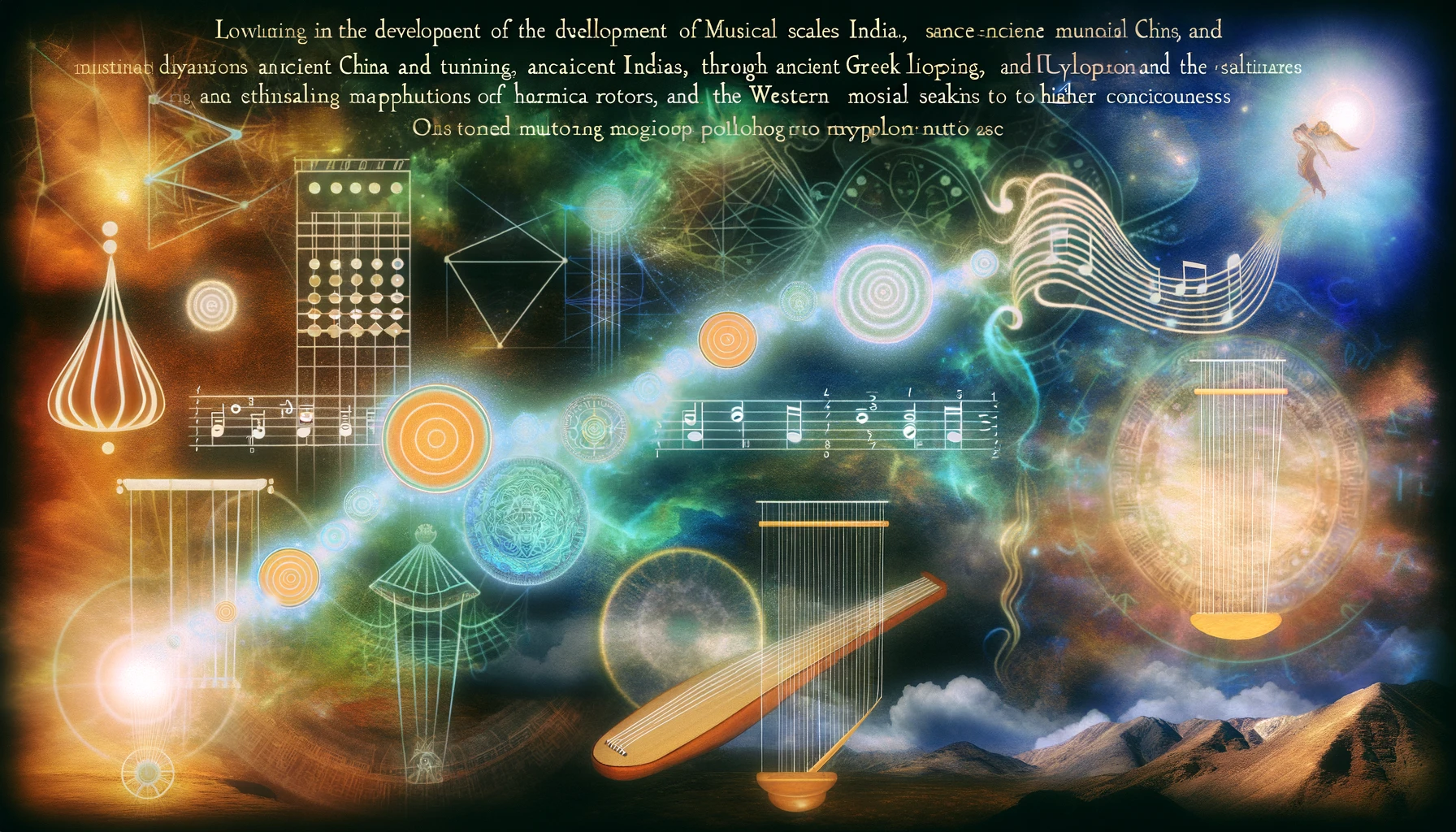Music and the Power of Sound: The Influence of Tuning and Interval on Consciousness
Abstract
Music has always been esteemed for its power to speak directly to our higher consciousness, a power founded in the purity of simple harmonic ratios. In this book, Alain Danielou traces the development of musical scales and tuning from their origins in both China and India, through their merging in ancient Greece, and on to the development of the Western traditions of modal and polyphonic music. Understanding these potent harmonic relationships offers a way for today’s musicians to transcend the limitations of overly rationalistic music by drawing on its metaphysical roots.
Content
By Jacques COULARDEAU on April 20, 2008
Alain Daniélou is known first of all for his musical semantics based not on notes but on intervals, hence not on punctual sounds but on the articulation of one note onto another to form an interval and then on the articulation of intervals one upon another. In this book of articles and studies brought together, some of them being unpublished before, he used his approach to further some other ideas.
The basic principle is that an interval is the ratio produced by the frequencies of the two notes that define that interval. He tested and identified the psycho-mental effects of these intervals on listeners and connected them to three numerical elements appearing in such ratios (basically 2, 3 and 5).
But he further brings into his approach an important inspiration from the old Sanskrit approach of music. We have to note here he assumes that this Vedic tradition is the oldest human musical tradition, is the basic and sole because only possible musical approach, and it has been kept in later Hinduist music. We can see here he is totally unaware of the fact that Sumerian music is at least one thousand if not one and a half thousand years older.
Vedic music is not the original form of music. He also forgets that Hinduism is an old approach in India and he does not consider at all the Buddhist approach. All his symbolism with an ever present God as a creator would have to be challenged in the Buddhist understanding that there is no god and the world is not seen as created. Yet his symbolic approach that brings together musical notes, geometrical shapes, colors, animals, planets, basic elements, etc., … and gods, is interesting if we let the divine elements out of a modern assimilation.
The book is a lot more interesting when he shows how an interval has to go through an acoustic trip from the ear up into the brain and the mind to be interpreted and felt. Then his formal approach can lead to a new question he does not ask: are the effects of the intervals what they are because of the correspondence between the functional structures of these intervals and the brain cells that process the acoustic stimuli, and the stimuli of other senses?
And further on, that could lead to the question: are the formal structural characteristics of sounds in agreement or disagreement with the same in a building (like in a church) that has perfect acoustics? In other words Danielou’s agreement with the deistic and altogether rather purely experiential approach of the Hinduistic school limits his vision of his subject. What’s more, that blocks him totally against any form of music posterior to let’s say the romantics or at the latest Debussy.
He rejects all music composed over the last hundred years that does not follow the basic musical principles from the Renaissance to the Impressionistic era. In fact he states that all Vedic vision of music is the acme of music and he rejects the western principles of harmony that triumphed at the end of the 15th century. There is not much left then except going back to an exiled Tibetan monastery in some lost Himalayan mountain. I don’t think anyone wants to be that regressive. It could have been a marvelous book with a little distantiation from his hinduistic absolute reference.

Music and the Power of Sound
The relationship between music and consciousness, particularly regarding tuning and intervals, is a topic of interest in various fields, including psychology, neuroscience, and music theory. Here are some key points regarding the influence of tuning and intervals on consciousness:
1. Tuning Systems: Different cultures and historical periods have used various tuning systems to organize musical pitches. The choice of tuning system can have a significant impact on the emotional and psychological effects of music. For example, the Western equal temperament tuning system divides the octave into 12 equal semitones, while other tuning systems, such as just intonation or Pythagorean tuning, use ratios derived from whole numbers.
2. Interval Ratios: Intervals, or the distances between pitches, are fundamental building blocks of music. Different intervals evoke different emotional responses and have distinct psychological effects. For example, consonant intervals, such as perfect fifths or major thirds, are often perceived as stable and harmonious, while dissonant intervals, such as minor seconds or tritones, can create tension and unease.
3. Psychoacoustics: Psychoacoustics is the study of how sound is perceived by the human brain and how it influences cognition and emotion. Research in psychoacoustics has shown that certain musical intervals and frequencies can evoke specific physiological and psychological responses in listeners. For example, low-frequency sounds may evoke feelings of power or awe, while high-frequency sounds may evoke feelings of lightness or transcendence.
4. Brainwave Entrainment: Some researchers suggest that certain musical frequencies and rhythms can entrain, or synchronize, brainwave activity, leading to altered states of consciousness. For example, binaural beats, which involve playing two slightly different frequencies in each ear, are believed to produce brainwave patterns associated with relaxation, meditation, or focus.
5. Cultural and Contextual Influences: The psychological effects of music are also influenced by cultural and contextual factors. What may be perceived as harmonious and pleasing in one culture may be perceived as dissonant and unpleasant in another. Similarly, the emotional impact of music can vary depending on the listener’s personal experiences, associations, and cultural background.
Overall, the influence of tuning and intervals on consciousness underscores the profound relationship between music and the human mind. By understanding how music affects cognition, emotion, and perception, researchers and musicians can explore new avenues for therapeutic interventions, creative expression, and personal growth.
